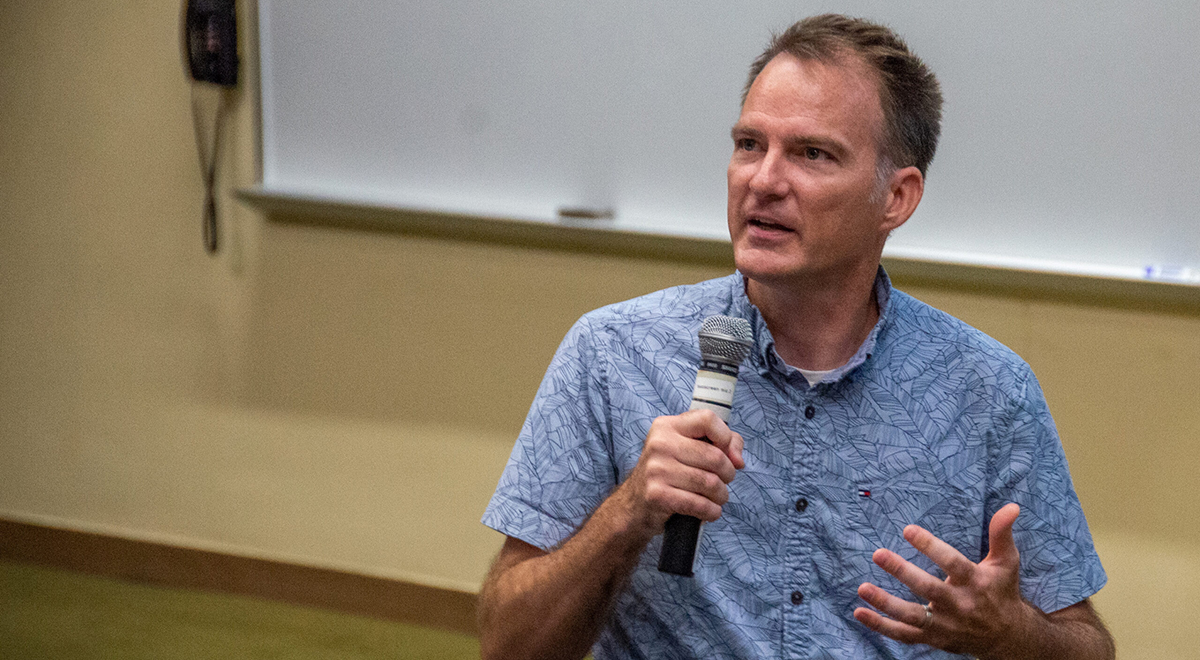Wesleyan Professor Collaborates on Discovery of Six Planets

Professor of Astronomy Seth Redfield was one of several collaborators who recently published the discovery of a six-planet system around a nearby bright star within the Milky Way Galaxy, according to a paper in Nature.
Not only are the planets within our galaxy, but they are in perfect resonance, a rare and potentially highly important discovery for humanity’s understanding of planet formation, Redfield said.
A planetary system in resonance means that the orbital periods—how long it takes a planet to complete a single orbit around its star—are in ratio with one another. Redfield said that in this case all six planets are in resonance with one another, with the inner-most planet orbiting three times in the time the next planet orbits twice. This pattern repeats for the first three planets, before transitioning to a four to three ratio, the study said. This signals that the planets could still be in their original structure, possibly giving researchers a window into how this planetary system was in its infancy.
“The current delicate configuration of the planetary orbits in HD 110067 rules out any violent event over the billion-year history of the system, making it a rare ‘fossil’ to study migration mechanisms and the properties of its protoplanetary disk in a pristine environment,” the study said.
Since the system is lightyears away, it was discovered by monitoring changes in the light its star transmits into the Transiting Exoplanet Survey Satellite (TESS) telescope. When the light was repeatedly interrupted, researchers were tipped off that there could have been a planetary system there. It was then confirmed through spectroscopy, or the radial velocity method, Redfield said.
“All of the planets may still be in their original birth configuration,” Redfield said. “So you have this perfect case study to look at how does where your planet forms affect the final properties and atmosphere that we see today.”
Researchers confirmed that each of the six planets are between the sizes of Earth and Neptune. Redfield said this gives researchers a unique opportunity to study how size affects a planet’s atmospheric composition, including at what point a planet may transition from a having a rocky core like Earth’s to being a more gaseous planet like the largest four in our solar system. “We don’t have anything like that in our solar system,” Redfield said.
The discovery paper ties well into Redfield’s research, which is on the atmospheres of nearby exoplanets.
“This a really favorable system for what I do a lot of, which is transmission spectroscopy, measurements of the absorption from the planetary atmosphere, so I’m really looking forward to the next phase of the project,” Redfield said.
Redfield and student Kyle McGregor ’24 are working on a related project studying the resonances of all known multi-planet systems, of which there are currently almost 1,000 known. This work will help us understand how rare a system like HD110067 is. It will also help us understand where planets form around their stars and how much they move around the system before settling down into their current orbits. Redfield and McGregor are set to present the collaborative research project “An Empirical Population Analysis of Multiple-Planet Systems Near Resonance” at the American Astronomical Society’s meeting in New Orleans in January. The two are hoping to publish a paper together later next year.
Redfield became involved in the study through a collective, Kesprint, which he has been a part of since 2017 when he discovered three larger-than-Earth sized planets with Wesleyan students Prajwal Niraula MA ’18 and Girish Duvvuri BA ‘17. The collaboration acquired the radial velocity data and analyzed it. For this paper, he said he specifically worked on atmospheric follow up targets and the study of resonant multi-planet systems.
The study, headlined by University of Chicago astronomer Rafael Luque, also included former Wesleyan post-doctoral researcher Ilaria Carleo and Katharine Marie Hesse MA’20.
“This is a very special find,” Redfield said of the discovery.

